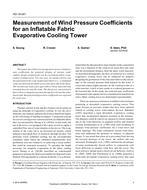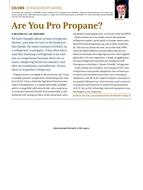Five studies are reviewed which address the psychology of thermal comfort. They are summaÂÂrized as follows: (1) under identical temperature conditions, adding wood panels to the walls, carpet, and comfortable furniture made people feel warmer than when they were in the stark, sterile setting of the room before it was modified; (2) at 65°F (18.3°C), secretaries who were informed that a radiant heater was operating in the modesty panel of their desks, felt warmer than those who were not informed-that it was operating; (3) when people were told that the temperature of a room was 74°F (23.3°C) when it actually was 72°F (22.2°C), 70°F (21.1°C), or 68°F (20°C), they were just as comfortable as when the room temperature was 74°F (23.3°C); (4) in a study to determine if comfort was related to the season of the year, it was found that cool temperatures are preferred over warm temperatures in the summer and the opposite is true in the winter; (5) based on a questionnaire in which temperatures were ranked as cooler-than-comfortable, comfortable, and warmer-than-comfortable, a Preferred Comfort Envelope was proposed that ranges from 70°F (21.1°C) to 76°F (24.4°C).
Citation: Symposium, ASHRAE Transactions, Volume 86, Part 1, Los Angeles, California
Product Details
- Published:
- 1980
- Number of Pages:
- 11
- File Size:
- 1 file , 930 KB
- Product Code(s):
- D-LA-80-02-5


